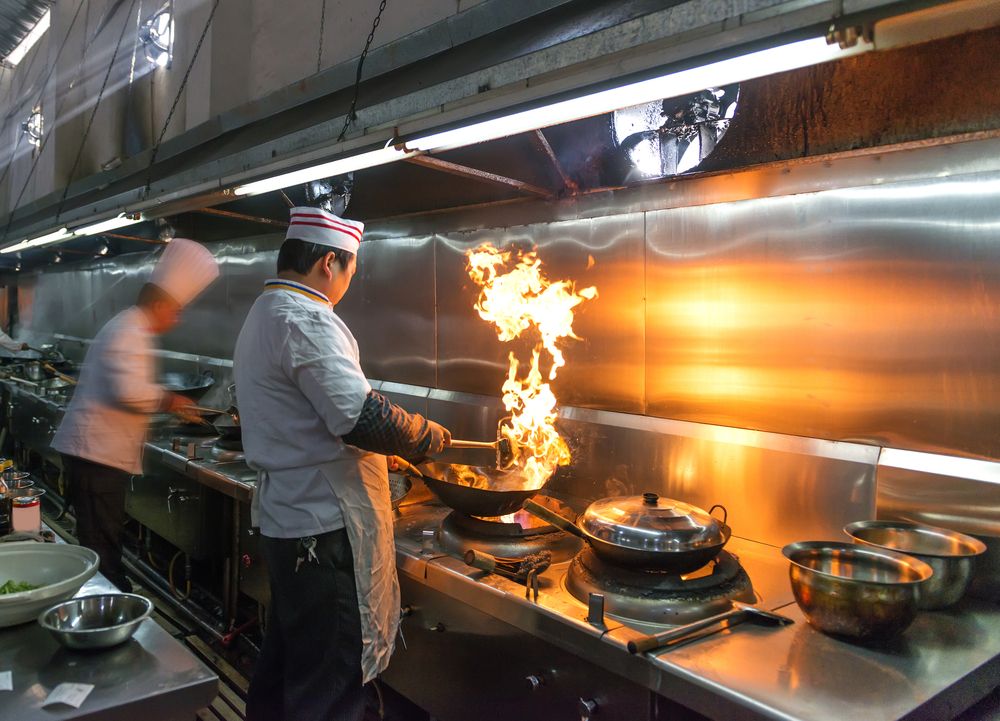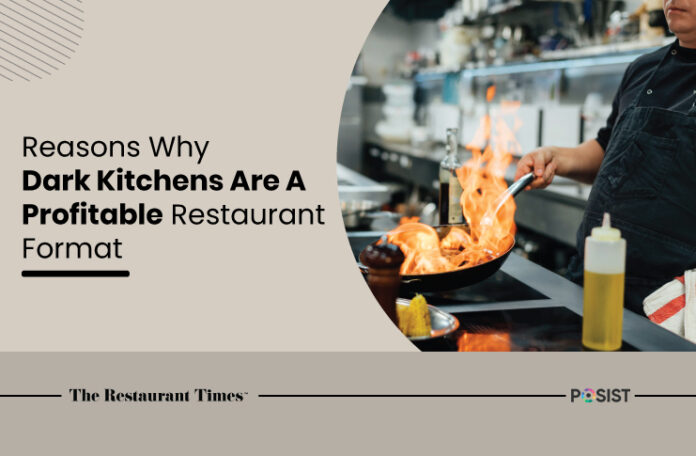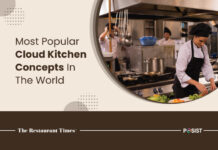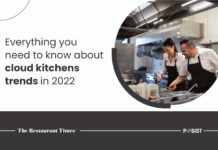With online food ordering proliferating and the willingness to spend long hours standing in lines plunging, dark kitchens are fast gaining popularity in the food and restaurant industry. The online delivery and takeout segment has witnessed a whopping 21.7% growth since 2017. While some restaurant owners have already made a shift towards delivery-only kitchens, some are still wondering if they really are as profitable as they are claimed to be.
What Are Dark Kitchens?
Dark kitchens, virtual kitchens, ghost kitchens, or cloud kitchens are virtual food ordering joints that operate on a delivery-only model. These kitchens do not have any space for sitting and only take orders for food delivery. They take food orders from customers online through their own app or through third-party food delivery apps, process them, and deliver the food. Some of the ghost kitchens also provide the facility of order pick-up wherein the customers can pick up their food on their own.
Why Are Dark Kitchens A Good Idea?
As a result of the global pandemic, the dark kitchen business model has shown massive growth in the last year. Ghost kitchens are drawing huge amounts of investments from many seed investors, and are expected to become a USD 3 billion industry by 2024. Dark kitchens have a lot of benefits over traditional kitchens, and given below are the reasons why investing in a dark kitchen is a good idea:
1. Massive Reduction In Costs
Unlike traditional kitchens, dark kitchens have fewer operational costs. As a dark kitchen owner, you don’t have to incur huge rental, operational, or labour costs. Dark kitchens do not have to worry about ambience, and hence, can focus more on providing good quality food at low prices. They only need to invest in kitchen infrastructure, and that too is a one-time investment.
2. Benefits Of Automation
The dark kitchen business model has a lot of room for automation where all the processes, like food ordering, food delivery, and payment, are carried out online. It is easier for dark kitchens to collect real-time data related to order preferences, popular items and order frequency, and adapt their business model accordingly.
3. Flexible Business Model
The dark kitchen business model provides the flexibility to change the branding, menus, and food concepts as and when required. You can even change your business model from a multi-brand dark kitchen to an aggregator-owned dark kitchen without much expense. This flexibility makes it easier to scale a dark kitchen’s operations.
Are Dark Kitchens Really As Profitable As Claimed To Be?
Lower setup and operational costs, optimal utilization of resources, wider audience reach, and the convenience of ordering food through apps have boosted the growth of dark kitchens significantly. The profit margins for dark kitchens are higher than traditional restaurants, and with low barriers to entry, the competition is getting stiffer. Let’s have a look at what it takes for cloud kitchens to become profitable.
1. Investing In The Right Technology
Dark kitchens do not have a storefront, which makes it crucial for them to serve excellent quality food to their customers for creating brand recognition and growing their business. But it is essential to understand customer behaviour to do so. Dark kitchen operators must anticipate customer demands and understand their likes and dislikes. Being aware of the costs associated with delivery aggregators and procurement of raw materials is imperative to the success of a dark kitchen.
Deploying a niche cloud-based software will help you consolidate orders from different aggregators, assist in inventory management, support centralized order tracking, and integrate multi-brand ordering and menu integration.

2. Locating The Kitchen Strategically
Imagine having a dark kitchen in a remote location where it is not easy to arrange for the raw materials or set up delivery infrastructure. Over time, it could negate all the advantages of time and cost associated with a dark kitchen. A strategic location is one that provides easy accessibility to raw material, delivery staff, and suppliers. Sufficient order volumes are the key to a successful cloud kitchen, and a well-researched location can do wonders for your business.
3. Leveraging The D2C Model
Almost 560 million people in India use the internet, out of which 81% prefer to order their food online. Dark kitchens can easily create effective connections to D2C Direct-to-Consumer) channels, like social media, websites, and other messaging platforms. Leveraging these channels will help dark kitchens develop a loyal customer base, personalize customer experience, manage their orders, and save on the hefty commission charged by aggregators. Listed below are a few ideas that will help you market your kitchen better:
- Ensure that your website is attractive and SEO-friendly
- Target your customers on popular social media channels, like Instagram, Facebook, and Twitter
- Leverage email marketing
- Promote online referrals and offer customized incentives
- Consider paid advertising to boost traffic
- Manage your online presence by replying to customer reviews, both negative and positive, and incorporating their feedback
- Scrutinize your online traffic to disseminate the right information through the right channels
4. Creating Multiple Brands
To remain profitable, dark kitchens must keep on innovating. Creating multiple brands helps dark kitchens spread their risk, increase each brand’s visibility, survive, and thrive. This also helps them capture and serve varied customer segments.
Dark kitchens are the model of the future. They won’t be replacing the conventional dining experience, but they will be the first preference for consumers given the surge in the convenience they offer. The dependence of dark kitchens on technology has enabled them to be agile and yield sales overviews.
They are a great way to reduce your rental and overhead costs and start a profitable business with a low investment. Investing in dark kitchens will also help you attract customers from different market segments. If you conduct thorough research, market your business in the right way, and invest in the right cloud-based restaurant software, you can set up a successful dark kitchen business in no time.

















